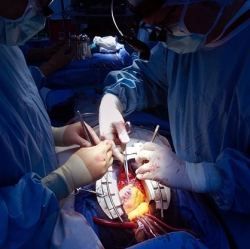
Researchers at the University of Iowa have created a bio patch to regenerate missing or damaged bone by putting DNA into a nano-sized particle that delivers bone-producing instructions directly into cells.
The bone-regeneration kit relies on a collagen platform seeded with particles containing the genes needed for producing bone. In experiments, the gene-encoding bio patch successfully regrew bone fully enough to cover skull wounds in test animals. It also stimulated new growth in human bone marrow stromal cells in lab experiments.
The study is novel in that the researchers directly delivered bone-producing instructions (using piece of DNA that encodes for a platelet-derived growth factor called PDGF-B) to existing bone cells in vivo, allowing those cells to produce the proteins that led to more bone production. Previous attempts had relied on repeated applications from the outside, which is costly, intensive, and harder to replicate consistently.
"We delivered the DNA to the cells, so that the cells produce the protein and that’s how the protein is generated to enhance bone regeneration," explains Aliasger Salem, professor in the College of Pharmacy and a co-corresponding author on the paper, published in the journal Biomaterials. "If you deliver just the protein, you have keep delivering it with continuous injections to maintain the dose. With our method, you get local, sustained expression over a prolonged period of time without having to give continued doses of protein."
The researchers believe the patch has several potential uses in dentistry. For instance, it could be used to rebuild bone in the gum area that serves as the concrete-like foundation for dental implants. That prospect would be a "life-changing experience" for patients who need implants and don’t have enough bone in the surrounding area, says Satheesh Elangovan, assistant professor in the UI’s College of Dentistry and a joint first author, as well as co-corresponding author, on the paper. It also can be used to repair birth defects where there’s missing bone around the head or face.
